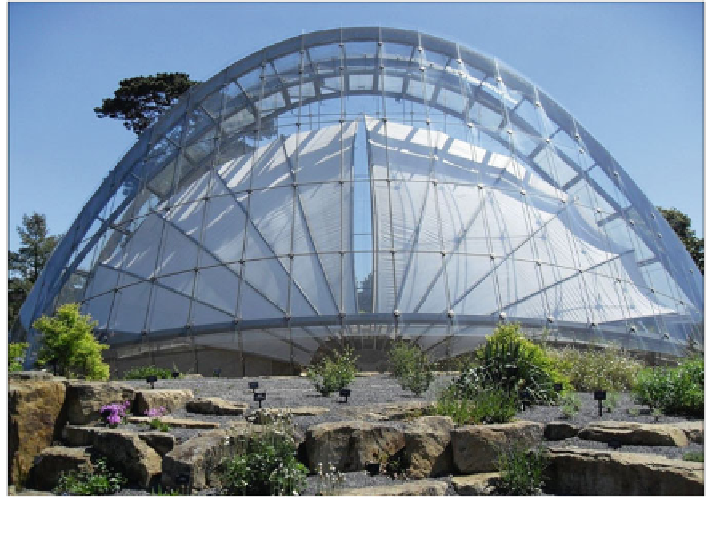Environmental Engineering Reference
In-Depth Information
Fig. 4.3
Davis alpine house, London, England (photo by P. Galletly)
tension rods that support the glass ceiling (Bellew
2006
). The air that is cooled
within the labyrinth is recirculated so it cools the low level plants. The labyrinth is
vented at night to take advantage of cooler temperatures. The mass remains at a
temperature usually cooler than that required for the space itself.
The system is arranged so that a small fan can drive the air through the labyrinth tunnels
and expel it outside at night, so that the structure is cool in the morning. As the building
starts to heat up the outdoor air is directed straight into the glasshouse, via vertical pipes
that terminate with directional outlets within the plant beds. As the outdoor temperature
continues to rise above 18 C the air is diverted through the labyrinth where it is cooled
before passing through the same pipes to cool the plants. This is cooling without refrig-
eration (Bellew
2006
).
This form of cooling allows more effective control, and in the way termites
open and close vents within mounds to regulate temperature, the 'coolth' can be
drawn upon or rejected. The economic payback period calculated for the labyrinth
cooling system was 9 years (Pawlyn
2011
,p.88).
A similar system has been installed by Atelier Ten in the atrium-like Federation
Square space in Melbourne, Australia (Fig.
4.4
). Mechanical cooling was eliminated
and the energy needed to power the system's fan is only 10 % of a conventional
overhead cooling system. If the atrium is at a comfortable temperature excess
'coolth' is diverted to adjoining museum galleries (Bellew
2006
).
Though both the Bionic car and Eastgate make contributions to energy effi-
ciency
it
is
doubtful
that
they
are
more
energy
efficient
than
comparable

Search WWH ::

Custom Search